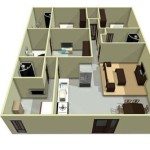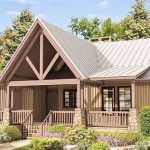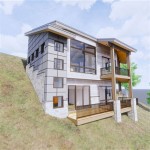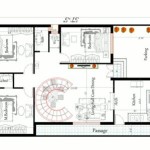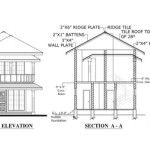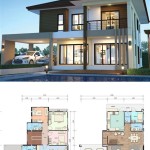IPFW Student Housing Floor Plans: A Comprehensive Guide
Indiana Purdue University Fort Wayne (IPFW), now known as Purdue University Fort Wayne (PFW), offers various student housing options aimed at providing a comfortable and conducive living environment for its students. Understanding the available floor plans is crucial for prospective and current students when selecting the housing option that best suits their needs and preferences. This article provides a detailed overview of the different floor plans offered within PFW student housing, highlighting key features and considerations.
The university's residential communities are designed to foster a sense of community while providing individual space for study and relaxation. Floor plans vary depending on the residence hall or apartment complex, influencing factors such as privacy, social interaction, and cost. Each floor plan aims to balance comfort, functionality, and affordability, catering to diverse student lifestyles.
Key Point 1: Understanding Residence Hall Floor Plans
Residence halls typically offer traditional-style living arrangements, primarily focusing on shared common spaces and individual or shared bedrooms. Each residence hall at PFW might have slightly different floor plan variations, but some common themes prevail.
Typical Shared Bedroom Layout: The most common floor plan in residence halls involves two students sharing a bedroom. This arrangement generally includes two beds, two desks, two chairs, and closet space allocated for each resident. The room dimensions vary, but they are generally designed to maximize space utilization. Some residence halls provide built-in furniture, while others allow students to bring their own. Key considerations when evaluating this floor plan include the size of the room, the proximity to bathrooms and common areas, and the noise levels.
Shared bathrooms are standard in traditional residence halls. These facilities are typically gender-specific and maintained by the university's housing staff. The number of students sharing a bathroom varies, influencing the level of cleanliness and availability. Some residence halls feature community bathrooms on each floor, while others might have smaller bathroom clusters serving fewer residents.
Common areas are an integral part of residence hall living. These spaces, which might include lounges, study rooms, and kitchenettes, are designed to foster interaction and collaboration among residents. Floor plans often position these common areas strategically to encourage spontaneous gatherings and provide spaces for group study sessions. Kitchenettes typically contain basic appliances such as a microwave and refrigerator, allowing students to prepare simple meals and snacks.
Some residence halls may offer single-occupancy rooms, providing students with greater privacy. These rooms are typically smaller than shared bedrooms but offer the advantage of personal space and quiet. Single rooms are often in high demand and may come at a higher cost compared to shared rooms. The floor plan for a single room usually includes a bed, desk, chair, and closet space for one person.
Accessible rooms are available in some residence halls, designed to meet the needs of students with disabilities. These rooms feature adapted layouts, including wider doorways, accessible bathrooms, and adjustable furniture. Students requiring accessible housing should contact the university's disability services office to coordinate accommodations.
An important aspect of residence hall floor plans is the location of Resident Assistants (RAs). RAs are student staff members who live on each floor and provide support, guidance, and community building activities. Their rooms are typically located strategically to ensure easy accessibility for residents. Knowing the location of the RA's room can be beneficial for students seeking assistance or information.
Key Point 2: Examining Apartment-Style Housing Floor Plans
Apartment-style housing at PFW offers a more independent living experience compared to residence halls. These units typically include multiple bedrooms, a shared living area, a kitchen, and a private bathroom. This arrangement provides greater privacy and autonomy, while still offering opportunities for social interaction.
Two-Bedroom Apartment Layout: A common apartment floor plan consists of two bedrooms, housing a total of four students (two students per bedroom). This layout typically includes a shared living room, kitchen, and bathroom. The bedrooms are designed to accommodate two beds, two desks, two chairs, and closet space for each resident. The kitchen usually includes standard appliances such as a refrigerator, stove, oven, and microwave. The living room provides a common space for residents to relax and socialize.
Four-Bedroom Apartment Layout: Another option is a four-bedroom apartment, accommodating four individual students. Each student has their own private bedroom, which typically includes a bed, desk, chair, and closet space. The apartment also features a shared living room, kitchen, and one or two bathrooms. This floor plan offers a high degree of privacy while still fostering a sense of community. The shared spaces provide opportunities for residents to interact and collaborate.
In apartment-style housing, the kitchen is a central feature. The floor plan typically allocates ample space for food preparation and storage. The kitchen usually includes cabinets, countertops, and appliances such as a refrigerator, stove, oven, and microwave. Residents are responsible for maintaining the cleanliness of the kitchen and providing their own cookware and utensils.
The living room in apartment-style housing serves as a common space for residents to relax, socialize, and entertain guests. The floor plan typically features a comfortable seating area, such as a sofa and chairs. Some apartments may also include a dining table and chairs. Residents are responsible for furnishing the living room according to their preferences.
The bathroom facilities in apartment-style housing can vary depending on the floor plan. Some apartments feature a single bathroom shared by all residents, while others have two bathrooms, reducing congestion and providing greater convenience. The bathrooms typically include a shower, toilet, and sink. Residents are responsible for maintaining the cleanliness of the bathroom.
Another important consideration in apartment-style housing is the availability of laundry facilities. Most apartment complexes provide on-site laundry rooms with washing machines and dryers. These facilities are often coin-operated or require the use of a university-issued card. The location of the laundry room and the number of machines available can impact the convenience of doing laundry.
Key Point 3: Factors to Consider When Choosing a Floor Plan
Selecting the right floor plan is a crucial decision that can significantly impact a student's overall living experience at PFW. Several factors should be considered when evaluating different floor plan options.
Privacy Needs: Students should assess their individual needs for privacy and personal space. Those who value privacy may prefer single-occupancy rooms or apartment-style housing with private bedrooms. Students who are more comfortable with shared living arrangements may opt for traditional residence halls with shared bedrooms.
Budget: The cost of student housing varies depending on the type of floor plan and the residence hall or apartment complex. Students should consider their budget and choose a floor plan that aligns with their financial resources. Shared rooms typically cost less than single rooms or apartment-style housing.
Social Preferences: Students should consider their social preferences when choosing a floor plan. Residence halls with shared common areas provide ample opportunities for social interaction and community building. Apartment-style housing offers a balance between privacy and social interaction. Students who enjoy socializing may prefer living in a residence hall, while those who prefer a quieter environment may opt for apartment-style housing.
Study Habits: The floor plan can impact a student's ability to study effectively. Students who require a quiet environment for studying may prefer single rooms or apartments with private bedrooms. Those who study well in group settings may benefit from living in a residence hall with common study areas.
Proximity to Classes and Amenities: The location of the residence hall or apartment complex can impact the convenience of attending classes and accessing campus amenities. Students should consider the proximity of different housing options to their academic buildings, library, dining halls, and recreational facilities. Living close to campus can save time and reduce transportation costs.
Amenities and Services: Different housing options offer varying levels of amenities and services. Some residence halls provide amenities such as cable television, internet access, and laundry facilities. Apartment-style housing typically includes a kitchen and private bathroom. Students should consider the amenities and services offered by each housing option and choose the one that best meets their needs.
In conclusion, understanding the diverse range of floor plans available within PFW student housing is essential for students seeking comfortable and functional living environments. Careful consideration of factors such as privacy, budget, social preferences, study habits, and proximity to campus resources will contribute to informed decision-making and a more successful residential experience at Purdue University Fort Wayne.

Housing Options Purdue University Fort Wayne

St Joe Place Fort Wayne

St Joe Place Fort Wayne

Ipfw Student Housing March Construction Update
Ipfw Student Housing On The Waterfield Campus Building A 3d Warehouse
Ipfw Student Housing On The Waterfield Campus Building C 3d Warehouse
Campus Master Plan
Student Housing Handbook

Canterbury Green 2727 Blvd Fort Wayne In 46835 Apartment Finder

Student Housing Near Na University Purdue Fort Wayne Uloop


